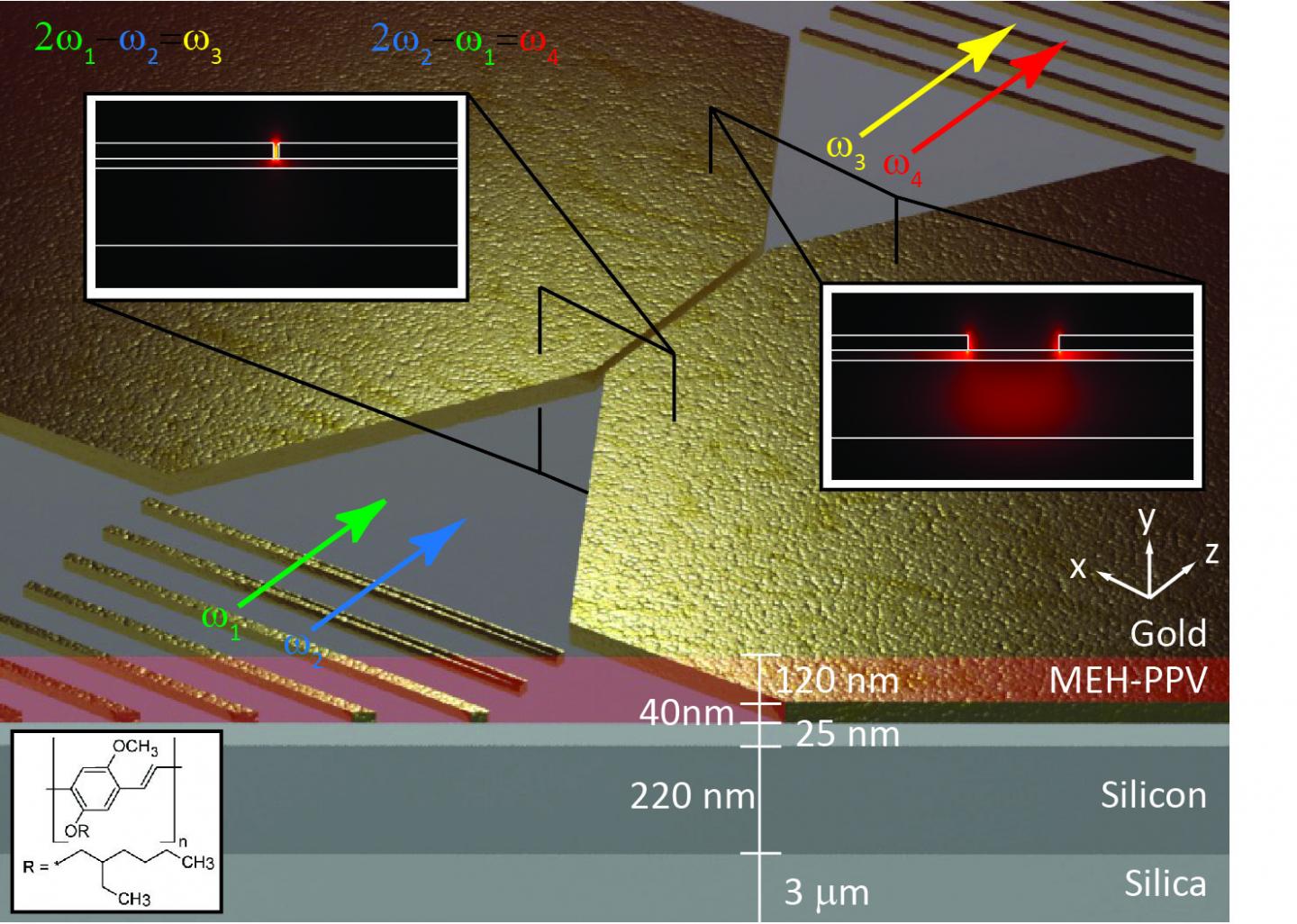Squeezing light into 25nm channel brings optical computing a step closer

Researchers from Imperial College London has reduced the distance over which light can interact by 10,000 fold
A team from Imperial College London has reduced the distance over which light can interact by 10,000 fold. This means that what previously would have taken centimetres to achieve can now be realised on the micrometre scale, bringing optical processing into the range of electrical transistors. The results are published today in the journal Science.
Michael Nielsen, from the Department of Physics at Imperial, said: "This research has ticked one of the boxes needed for optical computing.
"Because light does not easily interact with itself, information sent using light must be converted into an electronic signal, and then back into light. Our technology allows processing to be achieved purely with light."
Normally when two light beams cross each other the individual photons do not interact or alter each other, as two electrons do when they meet. Special nonlinear optical materials can make photons interact, but the effect is usually very weak. This means a long span of the material is needed to gradually accumulate the effect and make it useful.
By squeezing light into a channel only 25 nanometres wide, the Imperial team increased its intensity. This allowed the photons to interact more strongly over a short distance, changing the property of the light that emerged from the other end of the one-micrometre-long channel.
The team achieved the effect by using a metal channel to focus the light inside a polymer previously investigated for use in solar panels. Metals are more efficient at focussing light than traditional transparent materials, and are also used to direct electrical signals. The new technology is therefore not only more efficient, but can be integrated with current electronics.
Rupert Oulton, from the Department of Physics at Imperial said: "The use of light to transfer information has gotten closer to our homes. It was first used in transatlantic cables, where capacity was most crucial, but now fibre optic broadband is being installed in more and more streets in the UK. As our hunger for more data increases, optics will need to come into the home, and eventually inside our computers."
As well as providing an important step towards optical computing, the team's achievement potentially solves a longstanding problem in nonlinear optics. Since interacting light beams with different colours pass through a nonlinear optical material at different speeds, they can become 'out of step' and the desired effect can be lost.
In the new device, because the light travels such a short distance, it does not have time to become out of step. This eliminates the problem, and allows nonlinear optical devices to be more versatile in the type of optical processing that can be achieved.



































